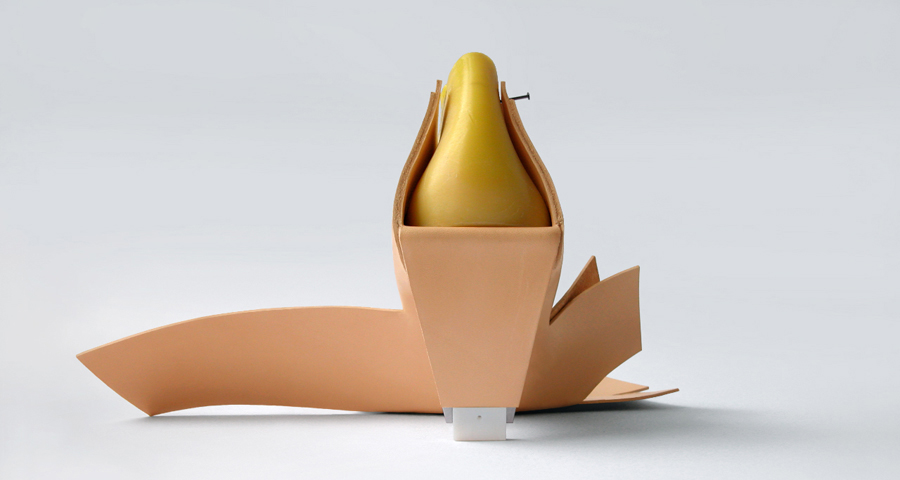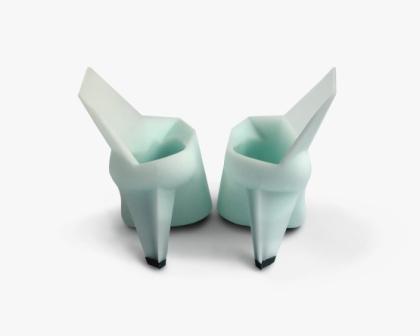







| RotationalMouldedShoe |
The RotationalMouldedShoe, designed for a show at the Krannert Art Museum in Illinois in 2009, is a one-off pair of shoes exhibited along with the full-fledged industrial process used to make it. The exhibition includes, in sequence, every stage in the process of making the shoes. It proceeds from the initial design, to the computer-produced negative mould, to the specially-designed rotation-molding machine, failed attempts, design solutions to those failures, and materials and approaches used to combine them. The elegant rotation-molding apparatus, designed by Nick Williamson is spins ceaselessly, forcing materials to the mold’s rims. The pair eventually produced, after 16-hours of cooling, is made of polyurethane and stainless steel. The shoes emerge from the mould in one piece; the final steps requires slicing them apart. Every stage of this process is astonishing, not least the result – an asymmetrical, angled object which looks like dynamic, post-modernist architecture but functions as a high-heeled shoe. Rotation molding, a technology that until recently was used mostly for lack-luster sewage pipes, has recently been taken up by product designers for household items. Slipping rotation molding into the realm of fashion, Ten Bohmer points at the objectification of shoes. |
| Carbonfibreshoe #1 |
This shoe, made of four carbon fiber elements, includes a vertical heel placed at the side of the foot, and a platform on which the foot rests. The structure of the shoe demands of its wearer complete focus on weight distribution, as it does not support normal walking patterns. This shoe is only remotely connected to its conventional relatives or uses. Ten Bohmer’s designs challenge our single-minded approaches to functionality, and meld art with technology. |